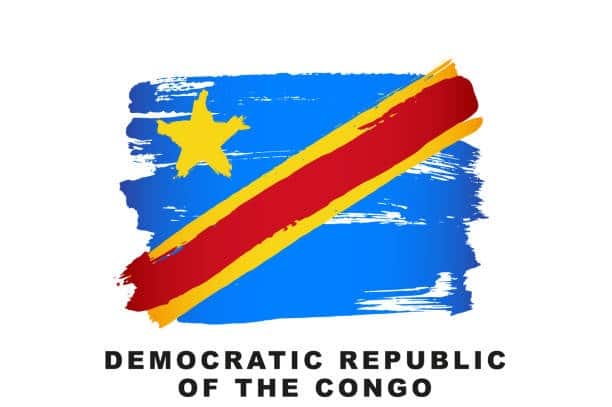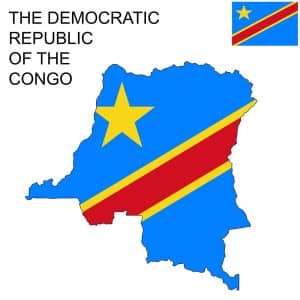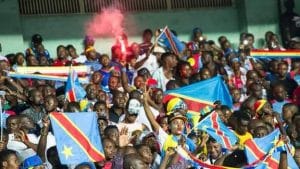Headlines
The Democratic Republic of Congo Population, Official Language And More.

The DRC has been struggling with ongoing conflicts, especially in the eastern provinces, where various armed groups fight for control of land and resources. It has also faced political instability, corruption, human rights violations, poverty, and humanitarian crises. It held its first democratic elections in 2006 and 2011, but they were marred by violence and fraud. In 2019, Felix Tshisekedi became the president after a disputed election that was challenged by his rival Martin Fayulu.

The Democratic Republic of Congo

The Population: The DRC has a population of around 112 million people, making it the 16th-largest country in the world by population and the most populous Francophone country. The population is very diverse, with over 200 ethnic groups and languages. The largest city and capital is Kinshasa, with over 8.9 million people.
The Landmark: The DRC has many natural and cultural landmarks that attract visitors and reflect its history and identity. Some of the most famous ones are the Congo River, the second-longest and deepest river in Africa; the Virunga National Park, a UNESCO World Heritage Site that hosts endangered mountain gorillas and volcanoes; the Okapi Wildlife Reserve, another UNESCO site that protects the rare okapi and other wildlife; and the Lola ya Bonobo Sanctuary, a refuge for orphaned bonobos, a species of great ape endemic to the DRC.
The Official Language: The official language of the DRC is French, which was introduced during the colonial period and is used as a lingua franca among the different ethnic groups. However, there are also four national languages that are widely spoken: Kikongo, Lingala, Swahili, and Tshiluba. These languages belong to different linguistic families and have regional variations. Many people are bilingual or multilingual in the DRC.
The Culture: The DRC has a rich and diverse culture that reflects its ethnic, linguistic, religious, and artistic diversity. Some of the most prominent aspects of its culture are its music, dance, literature, cuisine, and sports. The DRC is known for its musical genres such as soukous, rumba, and ndombolo, which have influenced other African and global music. The DRC is also home to many renowned writers such as Sony Labou Tansi, Emmanuel Dongala, and Alain Mabanckou. The cuisine of the DRC varies by region, but some common dishes are fufu, cassava, plantains, and moambe. The most popular sport in the DRC is football (soccer), which has produced many famous players such as Dieumerci Mbokani, Yannick Bolasie, and Neeskens Kebano .
The Economic Stability: The DRC has a large and diverse economy that is based on its abundant natural resources, such as minerals, oil, timber, and agriculture. However, it also faces many challenges that hinder its economic stability, such as political instability, corruption, conflict, poverty, infrastructure, and governance. The DRC ranks among the lowest in the world in terms of human development, income per capita, and ease of doing business. It also suffers from high inflation, unemployment, debt, and inequality. Despite these difficulties, the DRC has shown some signs of improvement in recent years, such as economic growth, debt relief, peace agreements, and reforms.
The GDP: The GDP (Gross Domestic Product) of the DRC is the total value of all goods and services produced in the country in a year. It is an indicator of the economic size and performance of the country. The nominal GDP of the DRC is estimated at $69.474 billion as of 2023, making it the 87th-largest economy in the world. The real GDP, which is adjusted for inflation, is estimated at $40.275 billion as of 2022. The GDP per capita, which is the GDP divided by the population, is estimated at $536.45 as of 2020, making it one of the poorest countries in the world.
The Currency: The currency of the DRC is the Congolese franc (CDF), which is divided into 100 centimes. The CDF was introduced in 1997 to replace the new zaire, which had suffered from hyperinflation. The CDF is not widely convertible and has a floating exchange rate against other currencies. As of September 2023, 1 USD is equivalent to about 2,000 CDF .
The Food: The food of the DRC varies by region, but some common ingredients are cassava, plantains, maize, rice, beans, peanuts, and palm oil. Some common dishes are fufu, a starchy paste made from cassava or plantains; moambe, a stew made from palm nut sauce and meat or fish; pondu, a dish made from cassava leaves; and bugali, a porridge made from maize or cassava flour. The DRC also has a variety of fruits, vegetables, spices, and beverages.
Major Cities: The DRC has four cities that have over 1 million inhabitants: Kinshasa, the capital and largest city with over 8.9 million people; Lubumbashi, the second-largest city and mining center with over 2 million people; Mbuji-Mayi, the third-largest city and diamond hub with over 1.8 million people; and Kananga, the fourth-largest city and agricultural center with over 1.1 million people. Other important cities include Kisangani, Goma, Bukavu, and Kolwezi.
Major Airport, Sea Port and Schools: The DRC has several airports, sea ports, and schools that serve its transportation, trade, and education needs. Some of the major ones are:
Airport: The largest and busiest airport in the DRC is the N’djili International Airport (FIH) in Kinshasa, which handles domestic and international flights to Africa, Europe, Asia, and America. Other major airports include the Lubumbashi International Airport (FBM) in Lubumbashi, the Goma International Airport (GOM) in Goma, and the Bangoka International Airport (FKI) in Kisangani.
Sea Port: The largest and most important sea port in the DRC is the Port of Matadi (MAT) on the Congo River, which connects Kinshasa to the Atlantic Ocean. It handles most of the country’s imports and exports of goods such as minerals, oil, timber, coffee, and cocoa. Other sea ports include the Port of Boma (BOM) on the Congo River estuary, and the Port of Banana (BAN) on the Atlantic coast.
School: The DRC has many schools that provide primary, secondary, and tertiary education to its population. Some of the major ones are:
Primary: The primary education in the DRC lasts for six years and is compulsory for children aged 6 to 11. It covers basic subjects such as reading, writing, arithmetic, science, history, geography, civics, and religion. Some examples of primary schools are:
Ecole Primaire de la Gombe (EPG) in Kinshasa
Ecole Primaire de Lubumbashi (EPL) in Lubumbashi
Ecole Primaire de Mbuji-Mayi (EPM) in Mbuji-Mayi





